Sorted by date Results 1 - 25 of 27
This week I would like to say “Thank You” to all of you who have taken the time to read my stories, reminiscences and retellings of historical people and events in the Heartland of this great nation. I have personally enjoyed sharing these with you and have been pleased to know that they have been appreciated by you. Growing commitments in other areas of my daily life have clearly indicated that I must make some choices about how I spend my time. My commitment to a weekly column consumes more of the time that I believe I should be exp...
Charlie and Oliver were partners in the cattle business. Oliver had been at it for some time and knew the ‘ropes’ when it came to gathering wild Spanish cattle, building a herd and trailing them to market. Oliver was truly a man of vision and was a trail driver long before the heyday of the cowboy. As early as the late 1850’s, when Texas was still an unsteady fledgling, he was trailing herds east to Shreveport and New Orleans. It was Oliver who in 1858 was the first cowman to ever drive a herd of longhorns to the northern markets and usher...
My grandpas, both Nolting and Zeek, and my dad were farmers, ranchers, horsemen and ‘Jacks of all trades.’ Out of necessity they were carpenters, plumbers, electricians, auto and tractor mechanics, welders, veterinarians and whatever else was needed at the time. This was nothing new for men of their era and nothing new for many rural folks today. I helped build my first barn before I ever went to school. Although my responsibilities were menial and included fetching tools, bringing nails and holding down boards on the sawhorses, I was a par...
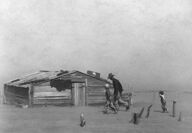
When I chose 'Across the Fence' as the by-line for this column I envisioned neighbors casually leaning against a shared fence, spending a little time just visiting. Maybe the talk would be about the weather (my dad's favorite) or family history, perhaps comments on world news or local scuttlebutt. Whatever the topic, I hoped it would be something worthwhile, interesting, maybe a bit humorous or perhaps a little more somber and reflective, but generally of some merit. My dad and I used to have...
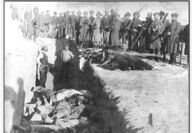
Sitting Bull, his son Crow Foot and fourteen other Sioux, had been killed in a botched attempt to arrest him on December 15, 1890. Stunned by his death and fearful of reprisal approximately 200 of his Hunkpapa band left the Standing Rock Reservation to join the Miniconjou Sioux at the Cheyenne River Reservation. The Miniconjou band was under the leadership of Chief Spotted Elk. The attempted arrest was based on the false assumption that Sitting Bull was a leader and instigator of the recent...
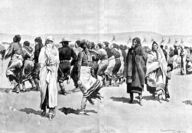
"My uncles," the young boy pleaded with hands raised above his head, "do not kill me. I do not wish to die." Crow Foot, the 14-year old son of Chief Sitting Bull, had been in hiding inside his father's cabin as the skirmish between the Indian Police and Sitting Bull's followers escalated. Nearly a dozen men lay dead or dying on the frozen ground outside the cabin. Among the dead was Sitting Bull who had been shot in the chest and head at the beginning of the skirmish. Many of the Indian police...
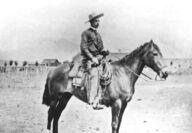
In the year 1878 Dr. Elisha Barker Graham along with his wife, Mary Hutchison Graham and daughter Kate, relocated his medical practice from New York to Cheyenne, Wyoming Territory. Dr. Graham's health dictated a move to a geographical region that was higher and drier than the sea level humidity of the east coast. At the time, Cheyenne was already the capital of the region though Wyoming would not become a state until twelve years later on the 10th of July in 1890. Dr. Graham opened his practice...
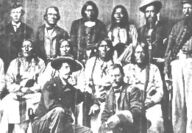
Tradition has it that the first Thanksgiving Day was a harvest feast in 1621 when the Plymouth Colonists and the Wampanoag Indians joined together to celebrate. What did they celebrate? Were they celebrating friendship, survival, or a bountiful harvest? Perhaps they celebrated the successful beginnings of a diverse community where differences in language, lifestyle, religion, heritage and traditions were not divisive. It was most certainly a gesture of welcome from the natives who then...
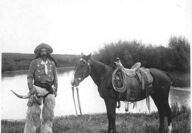
Ned Dunlap marched in the 1902 Old Settler's Day Parade in Kearney, Nebraska. Decked out in Angora chaps, bibbed shirt, silk neck scarf and appropriate wide brimmed hat. Ned bobbed his horse's tail and stuck the long hair under his hat, pulled bovine hooves up into his shirtsleeves, attached a set of longhorns to his head and marched in the parade as Kearney's only real 'cow / boy', and Solomon D. Butcher, like so many other hundreds of times, captured the moment for history. Although Ned...
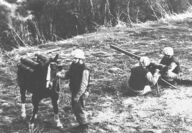
My Great-Grandfather, William Fredrick Gustav Nolting, was a Prussian immigrant to America in the late 1800's. Great-grandfather was a commanding officer in the Prussian Cavalry and he brought with him his rather harsh military demeanor of command and discipline. The story is told of him driving his team and wagon to Atchison to hire workers who could be found at the rail-yards, transients from the east. Two likely fellows were found and accompanied great-grandfather to the homestead, a short...
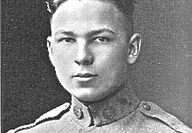
FROM THE WHITE HOUSE: November 11, 1919 President Woodrow Wilson: "A year ago today our enemies laid down their arms in accordance with an armistice which rendered them impotent to renew hostilities, and gave to the world an assured opportunity to reconstruct its shattered order and to work out in peace a new and juster set of international relations. The soldiers and people of the European Allies had fought and endured for more than four years to uphold the barrier of civilization against the...
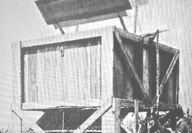
I remember my first trip off the farm and outside of Atchison County, Kansas. I was probably nine or ten years old and traveling with my Grandpa Nolting, heading west to Colorado. Somewhere, just past the Kansas/Colorado border, in the seemingly endless stretch of open prairie, there stood a huge stock tank being fed by two windmills. In my untraveled curiosity and ignorance I asked grandpa, "Why do they have two windmills?" Without hesitation grandpa replied, "The wind out here is so strong a...
It has been a little more than six years since this column “Across the Fence” was first printed in the fledgling newspaper, The Gering Citizen. Since that first column more than 300 pieces have followed, nearly 400,000 words, and that’s a lot of words from a feller who usually doesn’t have much to say. At the start of this journey I shared much of my personal life through family history, personal stories and other events that occupied my day-to-day routines. The Western Nebraska Observer also began publishing the columns and, most recently, The...
Howard and Peggy Atkins are determined to be a part of a catalyst for change in the Kimball Community. “We want to stir up some interest,” Howard Atkins said, “get people thinking: What can I do? What can we do together? How can Kimball be more viable and attractive?” Through the Nebraska Community Foundation, Howard and Peggy have taken a giant step toward being that catalyst. The Nebraska Community Foundation is a non-profit organization that was founded in 1994 by visionary community leaders who set their sights on transforming Nebrask...
Howard and Peggy Atkins are Kimball County natives and proud of it. They farmed north of Dix for 50 years where they carried on with the legacy of their parents and grandparents before them. Howard’s roots grow deep in the Kimball County soil where his great-grandparents, Peter and Delilah Atkins and two sons, Dallas and Will ages 16 and 18, homesteaded on the treeless plains in 1887 after a journey from Missouri, through Iowa and across the eastern regions of the then young state of Nebraska. Howard’s grandfather, Dallas Atkins, and his bri...
“The Gap” threaded through the wind-cut spires and time-worn edifices of nature’s carved cathedrals in the towering sandstone walls of Scott’s Bluffs. North of the bluffs, reaching to the banks of the Flatwater (Platte), lay a rugged expanse of land known as “The Badlands,” an area of deep-cut ravines and gullies that no team of horses or oxen, pulling an overloaded immigrant wagon, could possibly traverse. And so, about five miles east of the gap, the trail would leave the nearby banks of the river and strike more westerly toward the imposing...
Born in Racine, Wisconsin on February 14, 1849 to Irish immigrant parents, Valentine Trant M’Gillycuddy would become one of the wests most notable military surgeons, government agent of the Pine Ridge, Sioux Reservation and influential statesmen. At the young age of twenty years, he graduated from Detroit Medical School and a year later became an instructor at the college. Teaching apparently did not suit him and so he took a job with the geodetic survey crew that was mapping Lake Michigan. Tall, gangly and in poor health, Dr. McGillycuddy s... Full story
The United States Post Office Department was created in 1775, by decree of the Second Continental Congress, with Benjamin Franklin being named the first Postmaster General. However, it was not until 1896 that Rural Free Delivery was begun as standard delivery to non-city dwellers by the U.S. Postal Service. The idea of a free delivery to rural areas had been debated for a long time and experimentation with the concept was begun in 1891 amid a firestorm of opposition. The strongest argument against the implementation of Rural Free Delivery was... Full story
On January 8, 1879 three Cheyenne Chief’s, with Dull Knife’s band, were taken from the barracks where they were being held at Fort Robinson. Capt. Harry Wessells hoped that by removing the leaders from the Cheyenne people that they would relent and agree to be returned to the reservation at Darlington. Each of the three leaders, Old Crow, Wild Hog and Left Hand, individually and collectively refused to voluntarily return to the Indian Territory Reservation at Darlington and were subsequently placed in irons and held in separate quarters. Their... Full story
On the night of September 9, 1878 the last remnants of Northern Cheyenne, under the leadership of Chief’s Dull Knife and Little Wolf, jumped the Darlington reservation on the northern banks of the Canadian River. The 700-mile journey, that they would make, created a legacy of remarkable courage, determination and human endurance. That same journey would also leave in its path a bitter legacy of violence, bloodshed and brutal revenge. Perhaps it will always be that among those who seek peace and quiet refuge there will also be those who only s... Full story
This past week has been one of unseasonably mild weather. With temperatures having been in the above average range of upper thirties and lower forties, our light jacket days came to an abrupt halt this past Friday when a well-predicted cold front barreled through the panhandle. Heavy, moisture-laden fog drew a grey curtain over the early morning sunrise and settled in a frozen layer of slick mist on every exposed surface. As crystal flakes began to fall, a gusty northwest wind whipped the flurry of snow into a brief, but threatening blizzard....
It was in the late spring month of June, the year 1847, in Summerville, Mississippi that an African slave woman known only as ‘King’ gave birth to a son. She named him Bose. Who his father was is unknown but some suspected that King’s master, Dr. Milton Ikard was the most likely sire. However, whether by custom or by lineage, the little boy child, born into slavery on that spring day would be officially recorded as Bose Ikard. In 1852, when Bose was five years old, Dr. Ikard moved his entire family, including his slave family, to western Parke... Full story
The military activity in Dakota Territory during the final days of December 1890 included the 7th U.S. Cavalry and the 8th U.S Cavalry. Their intended purpose was to track down the bands of Sioux who had left their respective reservations. Indians who stayed within the boundaries of their reservations were considered friendlies. Those who were not on the reservations were labeled as hostiles and were to be rounded up and returned by force, when needed, and by deadly force if necessary. Many of Spotted Elk’s Miniconjou, Sitting Bull’s Hun... Full story
Sitting Bull, his son Crow Foot and fourteen other Sioux, had been killed in a botched attempt to arrest him on December 15, 1890. Stunned by his death and fearful of reprisal approximately 200 of his Hunkpapa band left the Standing Rock Reservation to join the Miniconjou Sioux at the Cheyenne River Reservation. The Miniconjou band was under the leadership of Chief Spotted Elk. The attempted arrest was based on the false assumption that Sitting Bull was a leader and instigator of the recent Ghost Dance religion. The Ghost Dance was a ceremony...
In the pre-dawn hour of December 15, 1890, a squadron of more than twenty Indian Police roughly wakened Sitting Bull. Rudely escorted from his home, not even allowed the dignity to cover his naked body, Sitting Bull protested his unwarranted arrest. Careless, though passionate, shots were fired in defense of Sitting Bull and the fearful tribal police responded by killing the great Sioux Chief with one bullet in his back, one bullet in his head. While he lay in the spreading pool of blood, his home was searched and a young man was found still...